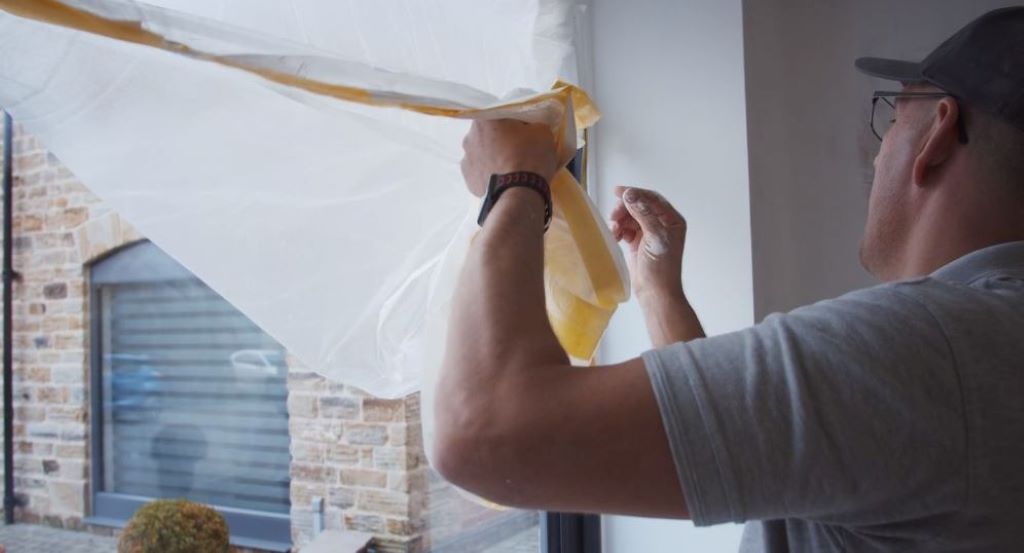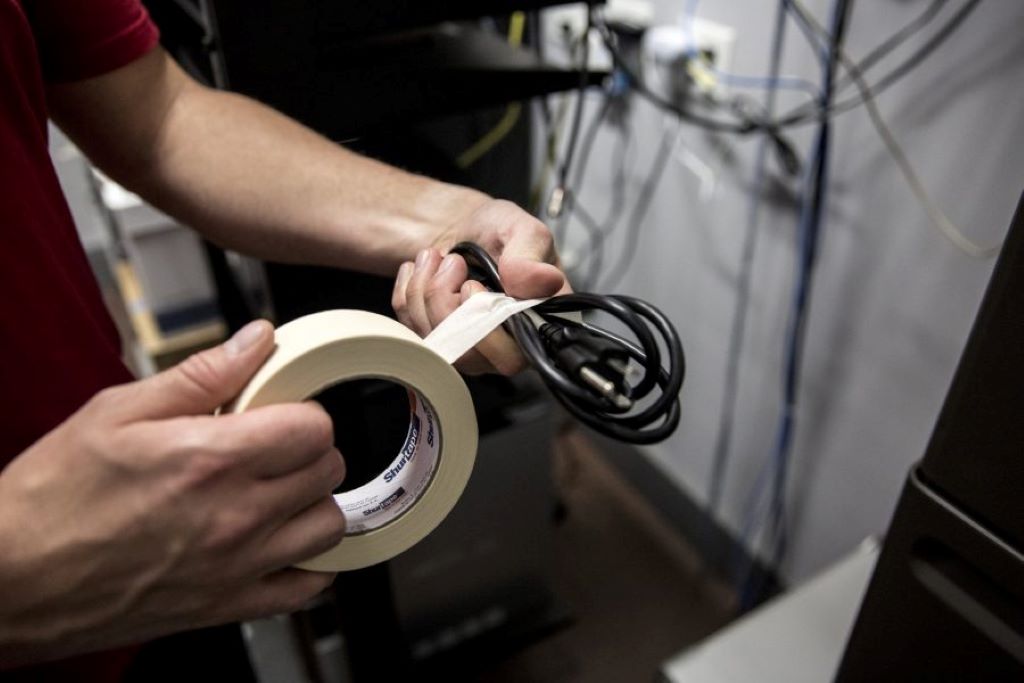Getting a crisp paint line can make or break your project. Whether you’re painting walls, trim, or furniture, mastering when to remove masking tape for best results is crucial. Mistimed removal can lead to peeling paint, messy edges, or adhesive residue—frustrating results after hours of hard work.
Let’s break down the best practices, expert insights, and proven techniques that ensure a professional finish every time.
Why Timing Matters More Than You Think
Many DIYers and even seasoned pros underestimate the power of timing. Remove masking tape too soon, and your paint may bleed. Wait too long, and the tape hardens into the paint layer, risking tears and rough lines.
According to a 2023 Home Improvement Survey by Statista, 67% of homeowners said their biggest painting frustration was tape-related failures—either paint peeling or poor edges.
Expert Opinion:
Pro painter Marcus Dean says, “The sweet spot is removing tape while the paint is slightly tacky—typically within an hour.”
Types of Tape and Surface Matter
Not all masking tapes are created equal. The paint’s drying time depends on several variables: the tape type, the paint formula, room humidity, and surface material.
- Painter’s Tape (like 3M Blue or FrogTape): Designed for clean removal and often allows for longer wait times.
- General Masking Tape: Can bond quickly with paint, especially latex-based, and cause tearing if left on too long.
- Delicate Surface Tape: Best for fresh paint or sensitive areas, but not ideal for textured walls or outdoor use.
Pro Tip: Always check the label. Some premium tapes indicate how long they can stay on—ranging from 24 hours to 14 days.
The Ideal Time to Remove Masking Tape
Here’s the golden rule: Remove masking tape when the paint is dry to the touch but not fully cured.
Latex Paint:
- Dry to touch in 30–60 minutes.
- Best tape removal window: 45 minutes to 2 hours after application.
Oil-Based Paint:
- Takes longer to set—up to 6–8 hours.
- Ideal tape removal time: Between 2 to 4 hours, depending on thickness.
Always pull the tape at a 45-degree angle, slowly and evenly. This helps avoid tearing or pulling dried paint.
Climate and Drying Conditions Affect Timing
Humidity, temperature, and airflow all play a role. In high-humidity environments, drying takes longer. Conversely, a dry and warm room can speed up the drying process significantly.
Data Insight: A study by the Paint Quality Institute found that drying time reduces by up to 40% when air temperature rises from 65°F to 75°F with adequate ventilation.
Pro Tip: Use fans to control airflow and a dehumidifier in damp areas. This creates an optimal paint-curing environment.
Common Mistakes and How to Avoid Them
-
Leaving Tape on Too Long:
- Leads to adhesive bonding with the paint.
- Causes jagged edges and peeling.
- Solution: Set a timer for 60–90 minutes after the final coat.
-
Pulling Tape While Wet:
- Results in smudged or dripping paint lines.
- Solution: Test an edge first—if it’s tacky but not transferring, you’re good to go.
-
Using Low-Quality Tape:
- Cheap tape often leaves sticky residue.
- Solution: Invest in brand-name painter’s tape; it’s worth the extra few dollars.
Expert Tips for Perfect Tape Removal
- Score the Edge with a Utility Knife: This prevents dried paint from lifting with the tape.
- Warm Tape for Better Removal: Use a hair dryer to slightly warm old tape if it’s resisting.
- Clean Surface Before Taping: Dust or grease can cause tape to lift mid-painting.
Marcus Dean adds, “90% of bad tape jobs come from rushing or skipping prep.”
Featured Snippet:
Q: Should I wait until paint is fully dry before removing masking tape?
A: No. The best time to remove masking tape is before the paint fully cures. Wait until it feels dry to the touch but still soft underneath—usually within 30 minutes to 2 hours after the final coat. This allows for clean, sharp lines without tearing or pulling paint. If the tape stays too long, it bonds with the dried paint and can rip the edges, leaving unsightly results. Always remove the tape slowly at a 45-degree angle for optimal control.
Real Reviews: What Users Are Saying
FrogTape Users
“I waited two hours as advised and got perfect lines with no bleed. It’s a game changer!” — ★★★★★
3M ScotchBlue Review
“Left it on overnight and had a few tears, but the trick is removing it early. Lesson learned.” — ★★★★☆
Generic Tape Woes
“Bought cheap tape, and it ruined my door frame. Spend a bit more, save a lot of cleanup.” — ★★☆☆☆
Case Example: Trim Painting Success Story
Angela from Austin shared her painting experience in a Reddit DIY forum. She painted her living room trim and removed the tape 45 minutes after the final coat.
“I scored the edges, pulled slowly, and every line was perfect,” she said. “No peeling at all.”
Her post went viral in the community, reinforcing that timing and technique are everything.
The Science Behind Paint Adhesion
Paint adheres through a drying and curing process. Drying occurs as solvents evaporate. Curing is the chemical hardening over time. Removing tape during the dry phase means the paint is stable but flexible—perfect for tape removal.
Timing Guide by Paint Type:
| Paint Type | Dry to Touch | Tape Removal Time |
| Latex (Acrylic) | 30–60 mins | 45–120 mins |
| Oil-Based | 6–8 hours | 2–4 hours |
| Chalk Paint | 15–30 mins | 20–60 mins |
FAQs
-
What happens if you remove tape too early?
It can cause paint to bleed and smear, especially with thinner coats.
-
How long should you wait to tape over fresh paint?
Wait at least 24 hours to avoid pulling up the fresh layer.
-
Why does paint peel off with the tape?
It often means the tape stayed too long or the paint bonded over the edge.
-
Can I reuse painter’s tape?
No. Reusing affects adhesion and causes uneven lines.
-
Is it okay to leave tape overnight?
Not recommended. Even “clean release” tape can cause damage after prolonged time.
-
What’s the best angle to remove tape?
A 45-degree angle works best to prevent paint lifting.
-
What if tape leaves residue?
Use a damp cloth or gentle adhesive remover to clean it off.
Final Thoughts: Mastering Tape Removal for a Professional Finish
Knowing when to remove masking tape for best results can be the difference between amateurish outcomes and pro-level finishes. Timing is everything. Pay attention to your paint’s drying window, remove the tape while it’s still tacky, and always score the edges when in doubt.
Experts agree—cutting corners on tape timing will cost you in clean-up time and frustration.
Avoid the most common mistakes. Use quality materials. Stay within the removal window. These small steps deliver big results—sleek lines, no bleed, and a project you’re proud to show off.
Read More: Tips for Packing When Moving Home
- Paint Quality Institute – www.paintquality.com
- Statista Home DIY Trends 2023 – www.statista.com
- Reddit DIY Forums – r/HomeImprovement
- Manufacturer Guidelines – 3M, FrogTape



